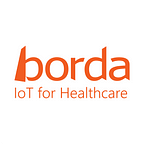The Impact of RTLS Patient Tracking Technology on Inpatient Transfers
In the fast-paced realm of healthcare, within the halls of the operating theatre, every moment holds significance. Every second saved in patient care translates into enhanced outcomes and improved experiences. In the quest for optimization, Real-Time Location Systems (RTLS) emerge as a beacon of hope, revolutionizing inpatient transfer durations with unparalleled precision and efficiency. With the help of RTLS-sourced data-driven approaches, improving workflows and reducing lost times can increase the efficiency of hospital operations, ultimately leading to a positive effect on patient satisfaction.
Seamless Transfers: The Role of Hospital RTLS in Operating Theatre
Imagine a scenario that a patient scheduled for surgery awaits their moment in the operation theatre. However, the transfer from the pre-op area to the theatre is delayed, causing a ripple effect that impacts scheduling, surgeon availability, and overall theatre efficiency. This is a scenario that healthcare providers grapple with daily, seeking ways to optimize processes without compromising patient care.
RTLS patient tracking technology acts as the beacon of efficiency in this complex landscape. By utilizing a network of sensors, tags, and advanced software, RTLS offers real-time insights into the location and status of patients within a healthcare facility. Patient Tags, worn on the patient’s wrist, equipped with RTLS technology are assigned to patients, enabling precise tracking without affecting their comfort or care. These tags communicate with strategically placed Locators throughout the hospital, providing real-time data on the patient’s location and movement.
In the operation theatre, where every second counts, RTLS patient tracking technology serves as a silent conductor orchestrating the transfer process. With Patient Flow product, nurses and theatre staff can effortlessly monitor the progress from patients’ length of stay in pre-op and post-op, transfer times in between, start times of surgeries, and many more; allowing for precise coordination and timely readiness. Patient relatives are also informed timely updates on the patient’s journeys in OR, such as when the surgery has started and when the patient leaves the operating room, through visual dashboards.
By leveraging the patient’s real-time location data, Patient Flow seamlessly aligns each patient with their designated operating room. In the event of any deviation, visual real-time alerts are promptly generated, guiding the patient to the correct operating room should they enter the wrong one.
RTLS patient tracking technology creates a ripple effect across the healthcare ecosystem, enhancing not only efficiency but also patient satisfaction. Patient Flow improves overall patient satisfaction by reducing idle waiting times dramatically. Smooth transfer of patients to the operation room ensures that operations are executed at planned times and timely transfers reduce patient anxiety, minimize wait times, increase operation theatre utilization and potentially increase the time spent with patients.
Moreover, the benefits of hospital RTLS extend beyond mere tracking. Its data analytics capabilities offer insights into historical transfer patterns, enabling hospitals to identify bottlenecks and inefficiencies. Through comprehensive reports, healthcare providers can implement targeted improvements, enhancing overall operational efficiency and patient experience.
In the pursuit of efficiency and precision within the healthcare landscape, Real-Time Location Systems stand tall as an instrumental force in transforming inpatient transfer processes. Their impact reaches far beyond the confines of hospital walls, resonating deeply with patients and healthcare providers alike. By seamlessly integrating patient tracking technology into the intricate dance of operating theatre logistics, RTLS orchestrates a symphony of efficiency, ensuring timely transfers and minimizing uncertainties. This technology not only optimizes workflows but also symbolizes a commitment to delivering patient-centric care.
